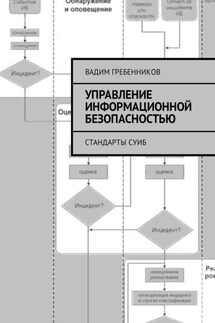IT Cloud - страница 12
The docker swarm init command will create a cluster leader, while alone, but in the response received, the command necessary to connect other nodes to this cluster will be given, important information in which is a token, for example, docker swarm join –token … 192.168 .99.100: 2377 . Connect to the remaining nodes via SSH using the docker-machine SSH name_node command and execute it.
For the interaction of containers, the bridge network is used, which is a switch. But for several replicas to work, a subnet is needed, since all replicas will have the same ports, and proxying is done by ip using a distributed storage, and it does not matter whether they are physically located on the same server or different. It should be noted right away that balancing is carried out according to the roundrobin rule, that is, one by one to each replica. It is important to create an overlay network to create DNS on top of it and be able to refer to replicas by name. Let's create a subnet:
docker network create –driver overlay –subnet 10.10.1.0/24 –opt encrypted services
Now we need to fill the cluster with containers. To do this, we create not a container, but a service, which is a template for creating containers on different nodes. The number of replicas to be created is specified during creation in the –replicas key , and the distribution is random over the nodes, but as uniform as possible. In addition to replicas, the service has a load balancer, the ports from which (input ports for all replicas) are proxied are specified in the -p switch , and Server Discovery (discovery of working replicas, determining their IP addresses, restarting) replicas are performed by the balancer independently.
docker service create -p 80:80 –name busybox –replicas 2 –network services busybox sleep 3000
Let's check the status of the docker service ls service , the status and uniformity of the distribution of the docker service ps busybox container replicas and its work wget -O- 10.10.1.2 . Service is a higher-level abstraction, which includes the container and organizing its update (by no means only), that is, to update the container parameters, you do not need to delete and create it, but simply update the service, and the service will first create a new one with the updated configuration, and only after it starts will delete the old one.
Docker Swarm has its own load balancer Ingress load balacing, which balances the load between replicas on the port declared when creating the service, in our case it is port 80. The entry point can be any server with this port, but the response will be received from the server to which the request was forwarded by the balancer.
We can also save data to the host machine, as in a regular container, there are two options for this:
docker service create –mount type = bind, src = …, dst = .... name = .... ..... #
docker service create –mount type = volume, src = …, dst = .... name = .... ..... # to host
The application is deployed via Docker-compose running on nodes (replicas). When updating the Docker-compose configuration, you need to update the Docker stack, and the cluster will be consistently updated: one replica will be deleted and a new one will be created in its place in accordance with the new config, then the next one. If an error occurs, a rollback will be made to the previous configuration. Well, let's get started:








